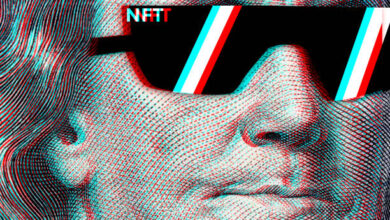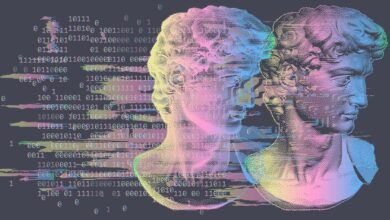Emerging Technologies
The use of Cryptography in Elections: Choices for a Sustainable Future

The second step at which the electronic voting system is used after verifying the person. With the help of the Direct Recording Electronic (DREs) voting machines, the voters can cast their vote through a token or card that directly permits them to cast their ballot.[14] Here, the machine uses cryptographic keys by which the machine recognizes the person sanctioned to vote. Moreover, even the machines are secured by way of administrative keys which give the election officials the sole permit to set them up. Clearly, the dependence on a strong organization is important to ensure free and fair elections even while using a process as secure as cryptography because the responsibility to set up these machines lies in the hands of the officials.[15] If the key administration is performed poorly, the tampering in whole election machinery could result in insecure systems. Thus, it becomes imperative to use strong and updated encryption to ensure a sustainable electronic voting system. The next few steps of storing, transmitting, and tabulating must involve a strong encryption system. Once the votes are transmitted to be tabulated, the votes resting in the storage system become decrypted, if not erased. This is one of the most common ways in which this system can be misused to threaten and coercive individuals. This act is also a huge violation of the right to privacy and thus, all people must be protected from the same.
Electronic election systems are potentially the future of the elections since they would result in the largest participation of people as they have easy access to cast votes while sitting at their homes. The benefits of such a system not only ensure greater public participation but also ensure a more sustainable process as the world is taking leaps towards a digital future. The ballot paper system is longer and requires more effort and manual labor leaving a way for grave human errors. Moreover, there is no security in that system that would keep the intimidation and tampering at bay. But it can also not be ignored that electronic voting by the process of cryptography is not the sole solution.
However, some technology and cryptography experts have tried to formulate a process to secure elections in a manner that uses the most minimal amount of technology and promises secure and safe elections, re-instilling the trust of the people in elections. The Three Ballot system was designed by Rivest, which allowed complete transparency in election processes while simultaneously securing them and at the same time verifying each voter.[16] This system uses cryptography and end-to-end voting methods that provide the users with the receipts which allow them to authenticate their choices, without revealing their identity, to tally the votes they cast. This system is unique because it allows voters to audit their own votes to ensure that their votes were cast without any tampering. It works in a way in which each candidate gets one additional vote from every voter. The election officials then take out the difference of the total number of voters and the votes of each candidate in order to determine the actual number of votes each candidate gets. Though the traditional electronic voting system seems more easy and accessible. but the low tech process is much more trustworthy and maintains the integrity of the elections. It fosters the morality and truthfulness in each step of the process of voting, from verifying voters to counting the votes. [17]
QUANTUM CRYPTOGRAPHY
Quantum Cryptography is one of the most novel methods of cryptography that relies majorly on the laws of physics. It essentially performs the same function as that of Cryptography but promises to deliver a stronger and more trusted system of transferring information. This technique and quantum technology, in general, has rarely been used and tested around the world. However, in October 2017, the Switzerland Government and its national elections officials declared that there shall be the use of quantum cryptography in their upcoming elections to secure their ballot entry center and the repository of the government where the votes are to be transmitted for further calculations. This marked the debut of the technology in dealing with real customer data, in the world at large. [18]
The voting process was unique in itself. It was witnessed that though the citizens used a ballot paper to vote, that information was uploaded on a computer after the polls closed. Subsequently, the process of encryption began which coded the data at an expeditious speed of one gigabit/second. This was followed by a transfer of the data from the data center processors to the center’s computers. The process of exchanging quantum keys promises the utmost security because the method is based on deep-rooted physics. [19]
The new quantum technology uses a similar technique of encryption and decryption but is characterized by a highly safe exchange of keys used for the same while handling the data. The reliance of the Swiss Government on this technology will be a way forward for other nations and companies to incorporate the same.
CONCLUSION
It is essential for all democracies and elections in the world to preserve the essence of a voting system that is to maintain trust and confidence in the system which affects the power and politics in a country. It is not always possible to ensure complete discreteness and hold fair elections while handling electronic voting governed by cryptography, as witnessed. Thus, for a sustainable future, one must look for a solution, not necessarily computers but a structure of elections that instills the confidence in their voters that their votes are safe and secure. Thus, cryptography can be used as it is a process to encrypt information and data, but the usage of the technology should not be necessarily traditional rather primarily safe and secure.
[1] Definition of ‘Cryptography’, THE ECO TIMES, https://economictimes.indiatimes.com/definition/cryptography.
[2] David Bernhard & Bogdan Warinschi, Cryptographic Voting — A Gentle Introduction, UNIVERSITY OF BRISTOL, ENGLAND.
[3] Oluwatobi A.N., Ayeni T.P., Arulogun T.O., Ariyo A.A. & Aderonke K.A., Exploring the use of biometric smart cards for voters’ accreditation: A case study of Nigeria electoral process, International Journal on Advanced Science, Engineering and Information Technology, 2020.
[4] Ronald Linn. Rivest, Cryptography and Machine Learning, LABORATORY FOR COMPUTER SCIENCE
MASSACHUSETTS INSTITUTE OF TECHNOLOGY CAMBRIDGE, MA 02139, Oct 1, 2006.
[5] Whitfield Diffie & Martin E. Hellman, New Directions in Cryptography, IEEE TRANSACTIONS ON INFORMATION THEORY, Vol. IT-22, Nov 6, 1976.
[6] David Kahn, Cryptography goes Public, FOREIGN AFFAIRS 58/1, 1979.
[7] Ben Lynn, Electronic Voting, STANDFORD EDU, https://crypto.stanford.edu/pbc/notes/crypto/voting.html.
[8] Steve Fyffe &Tom Abate, Stanford cryptography pioneers Whitfield Diffie and Martin Hellman win ACM 2015 A.M. Turing Award, STANDFORD EDU, Mar 1, 2016, https://news.stanford.edu/2016/03/01/turing-hellman-diffie-030116/.
[9] Shai Halevi & Hugo Krawczyk, Strengthening Digital Signatures via Randomized Hashing, IBM T.J. WATSON RESEARCH CENTER, NEW YORK 10598.
[10] The Important Uses of Cryptography in Electronic Voting and Counting, NATIONAL DEMOCRATIC INSTITUTE, https://www.ndi.org/e-voting-guide/examples/cryptography-in-e-voting.
[11] Dunn, Michael & Merkle, Laurence, Overview of Software Security Issues in Direct-Recording Electronic Voting Machines, AIR FORCE INSTITUTE OF TECHNOLOGY, USA, 2018.
[12] Josh Lake, Can cryptography be used to secure electronic voting systems?, COMPARITECH, May 7, 2019, https://www.comparitech.com/blog/information-security/cryptography-secure-electronic-voting-systems/.
[13] Chris Karlof, Naveen Sastry & David Wagner, Cryptographic Voting Protocols: A Systems Perspective, UNIVERSITY OF CALIFORNIA, BERKELEY.
[14] Hagai Bar, Why secure e-voting is so hard to get, HAGAI BAR-EL ON SECURITY, Jul 22, 2015, https://www.hbarel.com/analysis/cyber/secure-e-voting-is-hard-to-get.
[15] Josh Lake, Can cryptography be used to secure electronic voting systems?, COMPARITECH, May 7, 2019, https://www.comparitech.com/blog/information-security/cryptography-secure-electronic-voting-systems/.
[16] Susan D’Agostino, Cryptography Pioneer Seeks Secure Elections the Low-Tech Way, QUANTA MAGAZINE, Mar 12, 2020, https://www.quantamagazine.org/rsa-cryptographer-ronald-rivest-seeks-secure-elections-20200312/.
[17] Id.
[18] Larry Greenemeier, Election fix? Switzerland Tests Quantum Cryptography, The Sciences (Oct. 19, 2017), https://www.scientificamerican.com/article/swiss-test-quantum-cryptography/.
[19] Paul Marks, Quantum Cryptography to Protect Swiss election, New Scientists (Oct. 15, 2017), https://www.newscientist.com/article/dn12786-quantum-cryptography-to-protect-swiss-election/.





